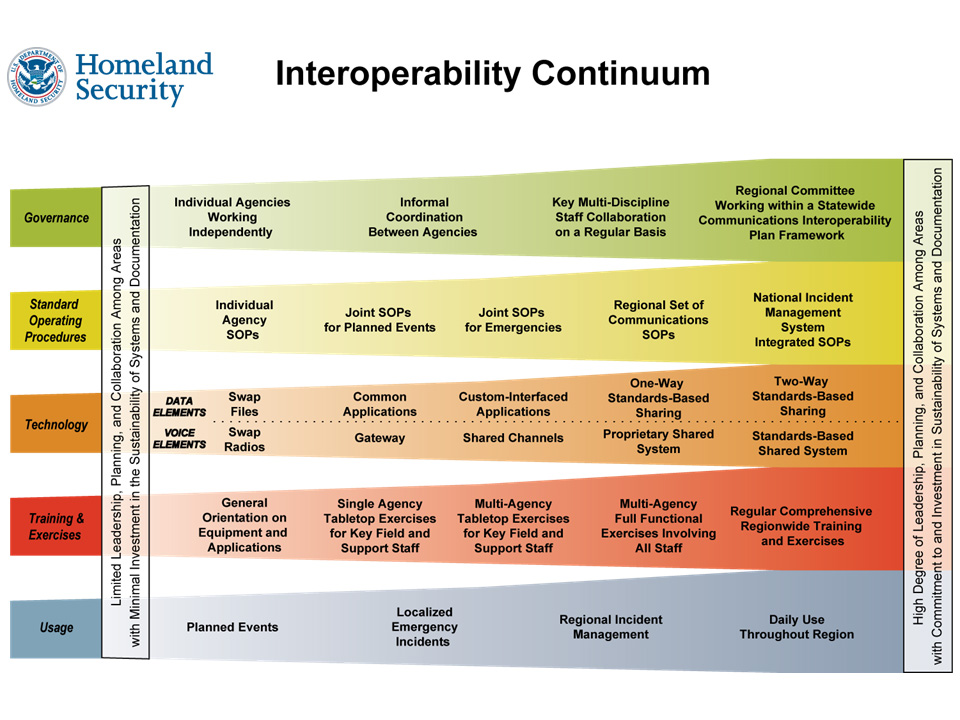Every day, events occur in communities across Minnesota that require a public safety response. Without a reliable network of interoperable emergency communications systems (voice & data), the response to these events can suffer. The ability of emergency responders to communicate between and across disciplines, agencies, and jurisdictions is critical to establishing command and control at an incident scene, maintaining situational awareness, and ensuring public safety. However, as numerous after-action reports and other assessments have revealed, there are still communications deficiencies that affect the ability of emergency responders to manage routine incidents and support the response to special events, disasters, emergencies, and acts of terrorism.
Reliable, timely, and interoperable communications (voice and data) amongst and between Public Safety Answering Points (PSAPs), emergency responders, and community members is a vital component to the effective delivery of public safety services, and in many cases, saving lives.
The Interoperability Continuum
To help promote a holistic approach to improving interoperable emergency communication capabilities, the DHS SAFECOM program developed the Interoperability Continuum (Figure 1). The Interoperability Continuum is designed to assist public safety agencies and policy makers with their efforts to build and sustain their interoperable emergency communication capabilities. The continuum identifies five critical success elements (Governance, Standard Operating Procedures (SOPs), Technology (Voice and Data), Training and Exercises, and Usage) that must be addressed to achieve a robust interoperability solution. Figure 1: The Interoperability Continuum
Figure 1: The Interoperability Continuum
Minnesota Land Mobile Radio Conventional Interoperability Plan
Although nearly all of Minnesota’s public safety agencies use the 800 MHz ARMER radio system, some of our public safety partners operate on VHF radio systems. To ensure that capabilities exist to communicate with these entities, the Statewide Emergency Communication Board (SECB) approved the Minnesota Land Mobile Radio Conventional Interoperability Plan in 2020. This plan calls for existing VHF base station radios strategically located at 112 sites across the state to be updated with several key VHF interoperability channels and for the decommissioning of the aging Motobridge network. These changes will allow all ARMER network-connected dispatch centers access to any of the VHF interoperability channels in the network.
Interstate Interoperability
To promote interoperable Land Mobile Radio (LMR) capabilities with surrounding states and provinces, the Statewide Emergency Communications Board approved the Minnesota Land Mobile Radio Interstate Interoperability Best Practices Guide and the Minnesota Land Mobile Radio Interstate Interoperability Crosswalk Plan in 2020. The Best Practices Guide identifies actions aligned with each lane of the SAFECOM Interoperability Continuum (Governance, Standard Operating Guidelines, Technology, Training and Exercising, and Usage) that should be implemented to achieve optimal cross-border interoperability. The Minnesota Land Mobile Radio Interstate Interoperability Crosswalk Plan details an initiative for establishing system-to system Land Mobile Radio interoperability between Minnesota and surrounding states and provinces.

